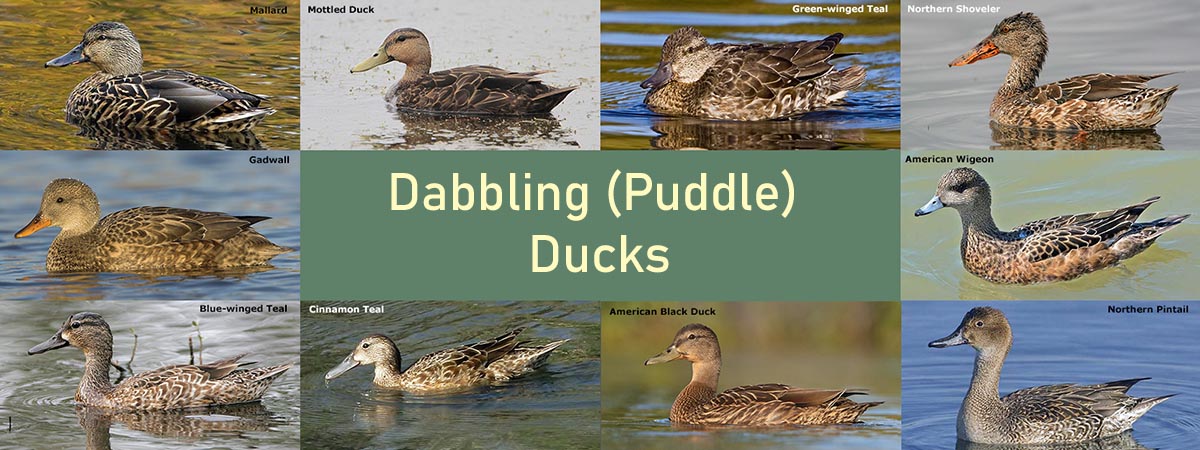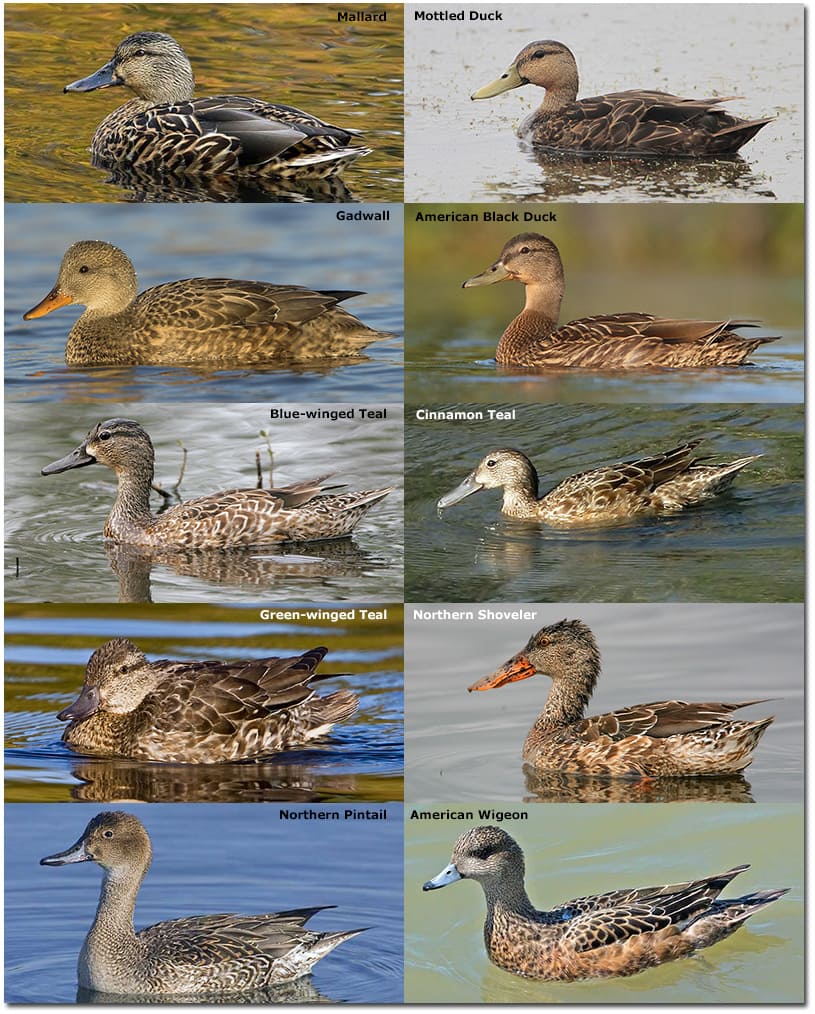Puddle Ducks
Dabbling or Puddle Ducks include the familiar Mallard.
Dabblers feed on or near the surface of the water. They are often observed with their head under the water and their tails sticking straight up, as they feed on underwater vegetation, snails or small crustaceans.

What you should know:
- Most species have a brightly colored speculum (a colorful area on the secondaries, best seen in flight).
- Birds in this group can leap straight into the air, they do not need a running start like most species of diving ducks.
- Many species in this group will hybridize with others. Mallards will cross with many other species, resulting in unusual color patters that are often observed in parks.
- Identification challenges: All of the female dabbling ducks are similar in appearance.
- Identification challenges: Males in Eclipse plumage loose the ability to fly for several weeks and resemble the female of the same species.
- Identification challenges: Most males in adult, breeding plumage are easy to identify. The exceptions are the Mottled Duck and American Black Duck, which both resemble a female Mallard.
American Black Duck American Wigeon Blue-winged Teal Cinnamon Teal Gadwall
Green-winged Teal Mallard Mottled Duck Northern Pintail Northern Shoveler
Comparison of female Mallard, Mottled and American Black Duck
To start things off, here is a quick comparison of the female ducks in this group. The images also illustrate how lighting and possible molting patterns can effect the appearance of a bird. The coloration of the Mallard female, Mottled Duck and American Black Duck can be the most confusing. Female Mallard is the palest, Mottled Duck a little darker and the American Black Duck the darkest, but lighting conditions can add to the difficulty of accurate identification. Range of Mottled Duck and American Black Duck do not overlap.
Bill color of female Mottled Duck is apparently variable. 6th Edition of the Nat Geo Guide says it is a greenish yellow color. Second edition of Sibley says olive drab to orange. Both guides do not indicate any bill markings. Texas birds are variable. Ranging from clear orange to olive to orangish and heavily marked. Visit the Mottled Duck page for images.

